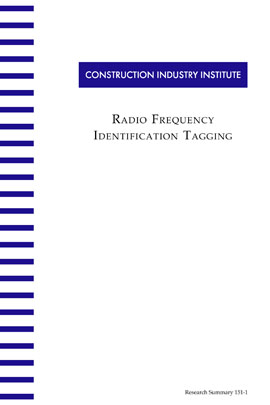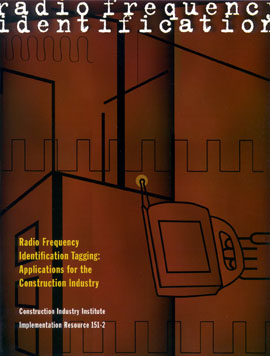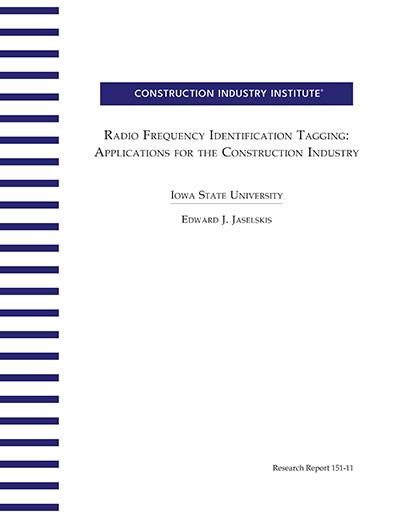
Radio Frequency Identification Tagging
Radio frequency identification (RFID) technology is currently being used in such areas as agriculture, athletics, manufacturing, security and law enforcement, and transportation, but few applications have been developed that are related to the construction and facility operations environment. This research summary provides current information about RFID tagging.
To foster an exchange of ideas about this technology, the CII RFID research team organized a construction industry–RFID supplier workshop. As a result, potential application areas related to construction engineering and design, material management, maintenance, and field operations were identified.
The workshop also resulted in the research team selecting five application ideas for pilot tests to investigate RFID and its applicability to the construction industry. The pilot tests indicated that RFID potentially reduces costs for both owners and contractors. One pilot test showed that RFID tags provided a time savings, particularly when downloading data into a company’s procurement tracking system and when flagging an item to prevent duplicate entries. Results also suggested that RFID lowered rework costs, reduced inventory shrinkage, decreased startup times, and increased positive material identification.
The research team also investigated ways to integrate RFID technology during the project life cycle to improve productivity, cost, schedule, quality, and safety. From the contractor’s perspective, inventory control could be vastly improved. From the owner’s perspective, asset management would most benefit from this technology. The following chapters describe the research effort and suggest how the industry at large can benefit from RFID tagging.



